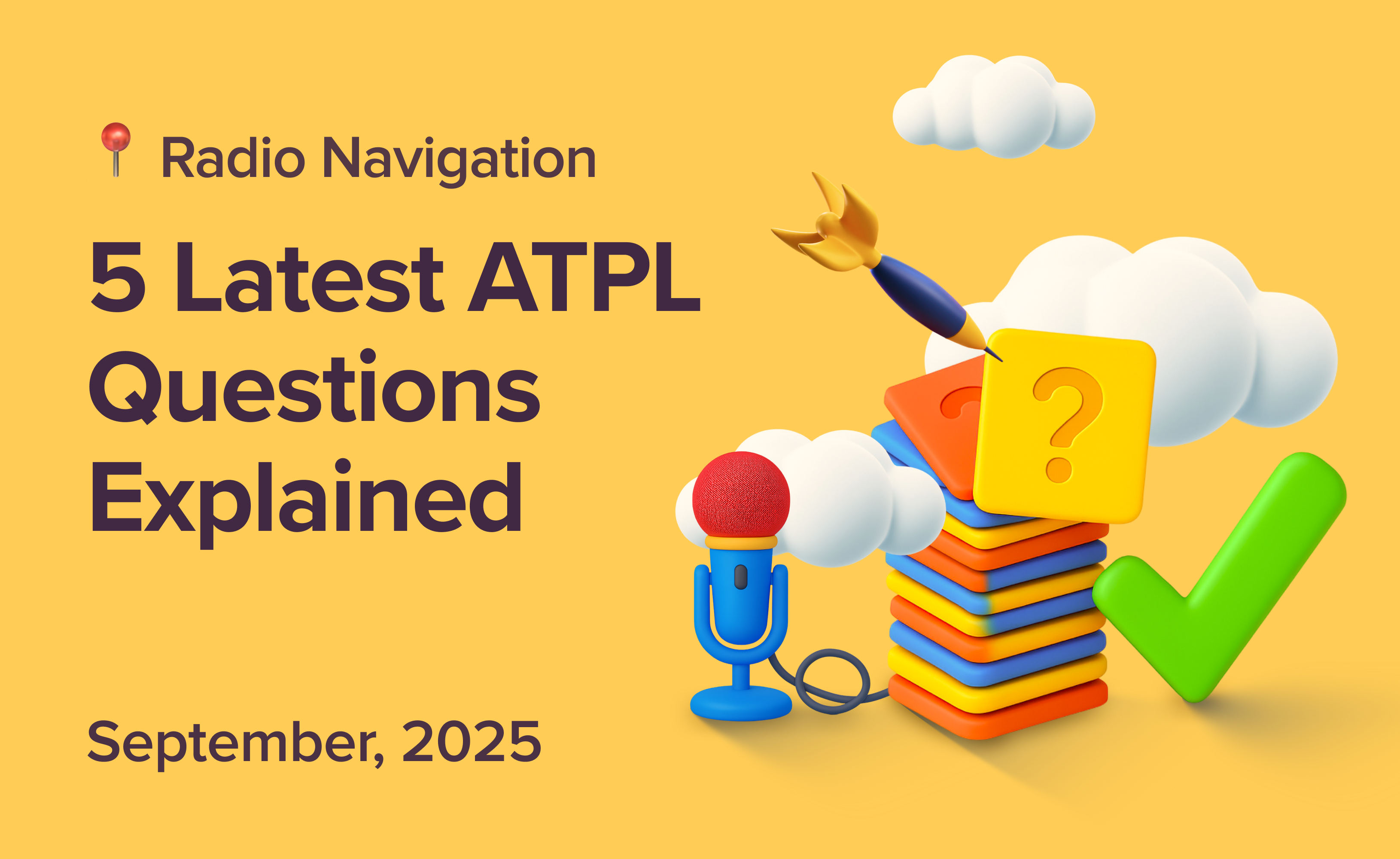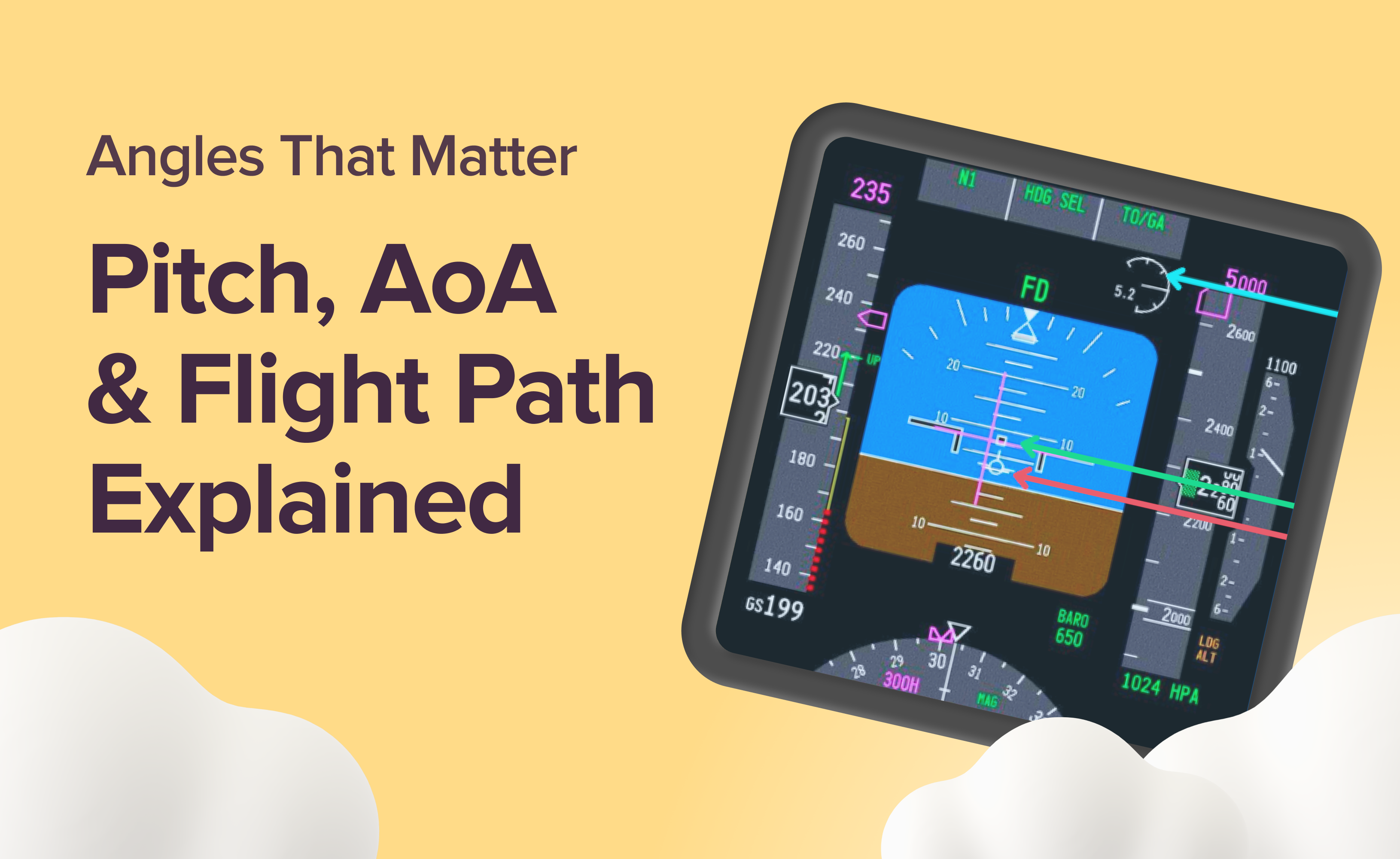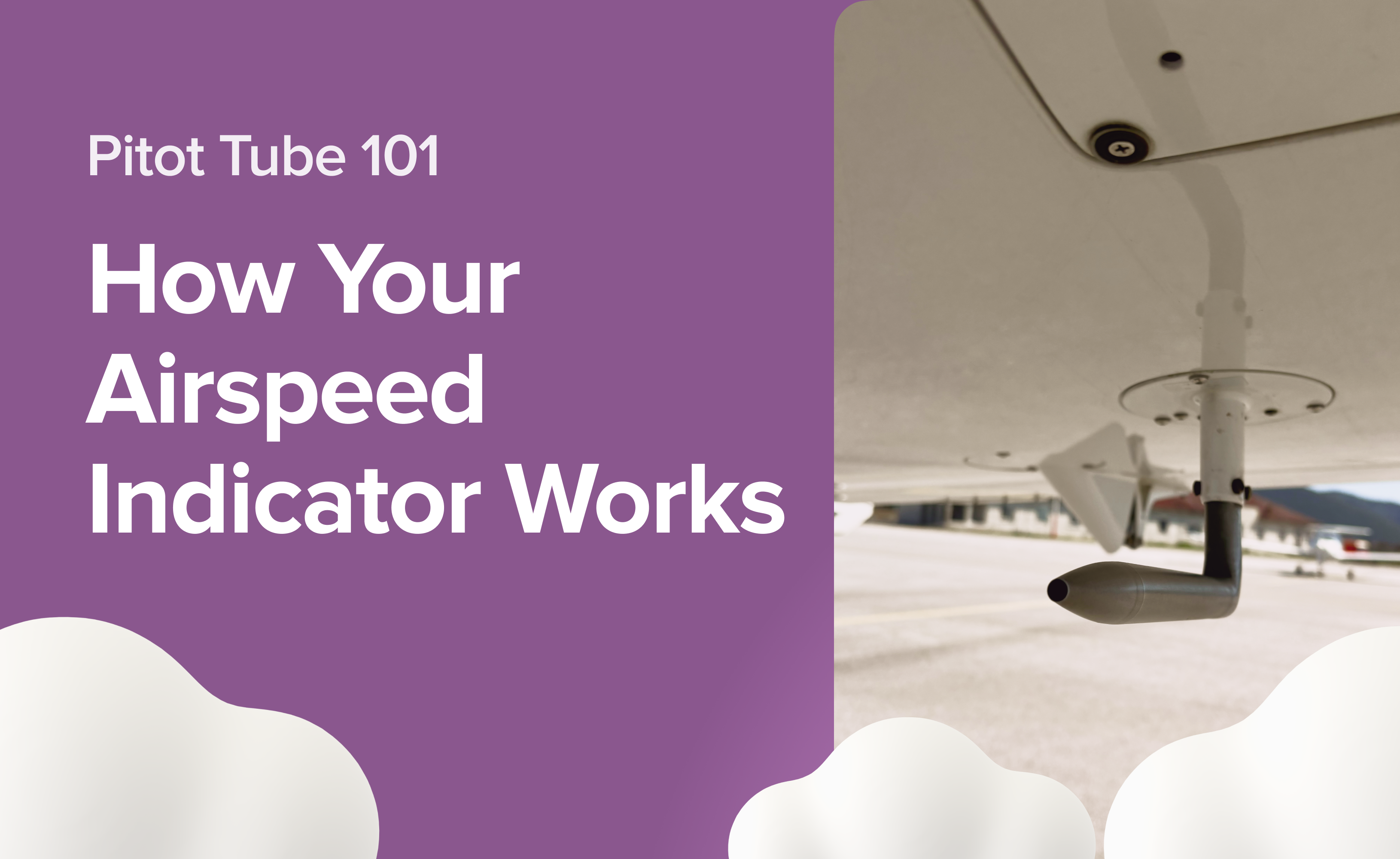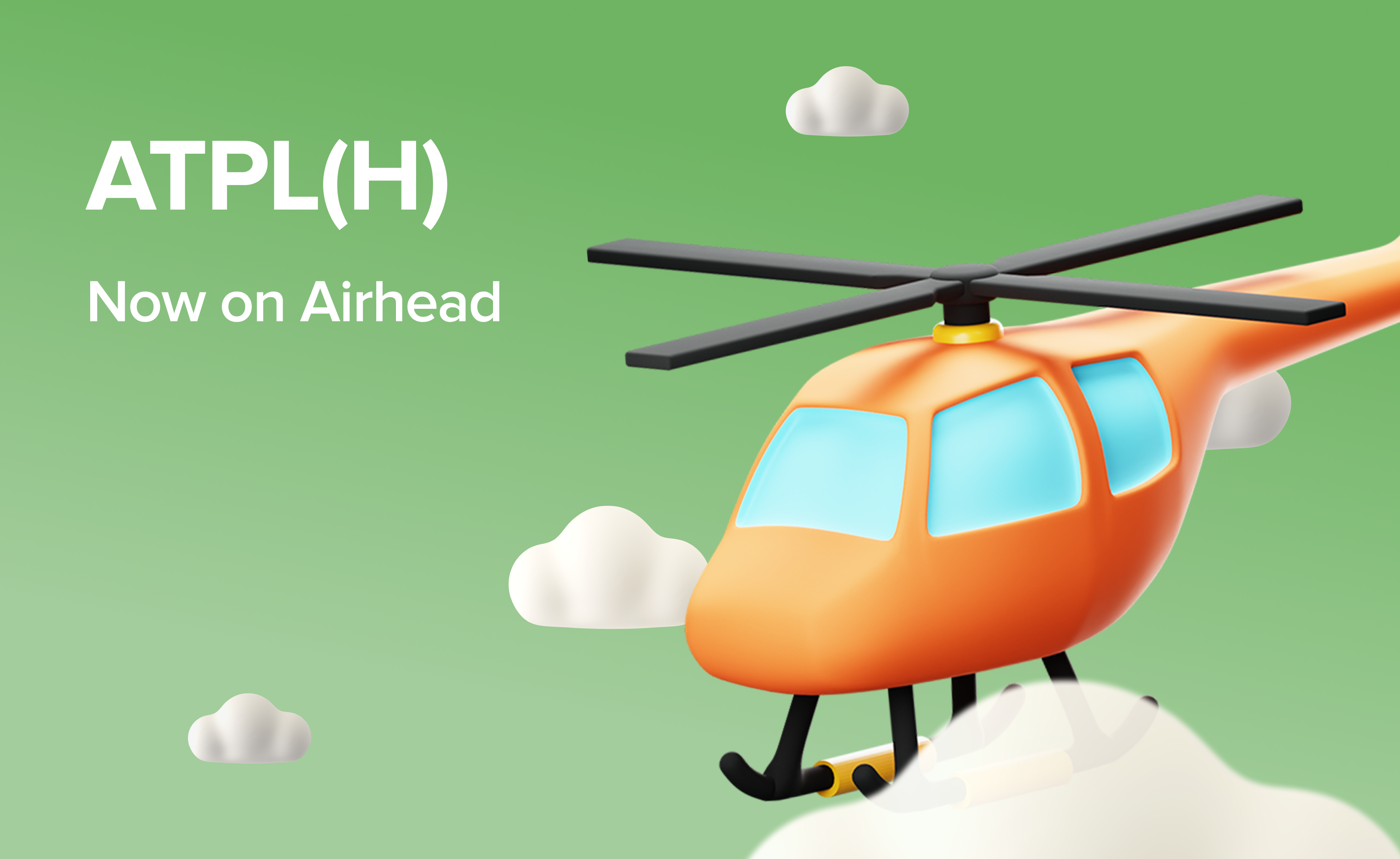Runway Lighting: Colours, Spacing, and Types

Flying at night adds a unique challenge to aviation, particularly during landing. In daylight, spotting the runway and avoiding obstacles is straightforward. However, after sunset, pilots rely heavily on the runway lighting system to safely approach and land at the airport. Without a solid understanding of these lights and their purpose, nighttime operations can become risky, increasing the chance of accidents.
Experience the magic of night flying. Conquer the unique challenges and unlock the rewards of flying under the stars. Read our blog: Night Flying: A Guide for New Pilot Training.
In this article, we’ll break down everything you need to know about runway lighting — its colours, spacing, and types.
Essential Runway Parts
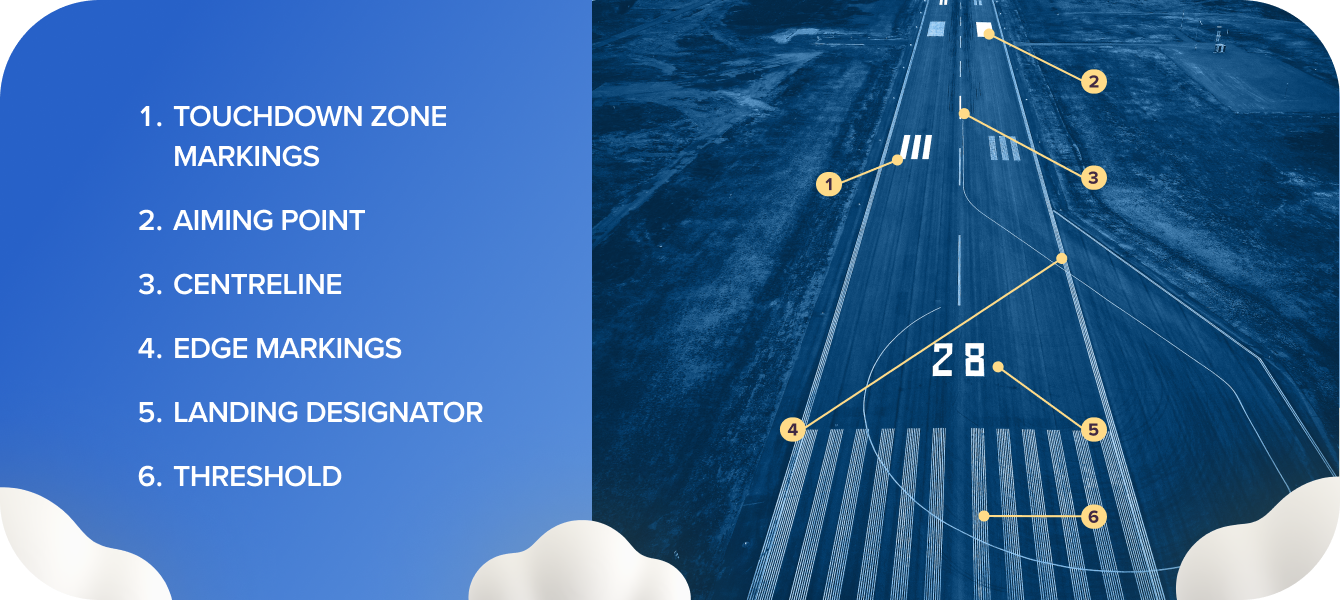
Before we jump into the details of the runway lighting system, let’s have a closer look at the main parts of a runway. These elements are integral to safe operations, offering pilots the visual and physical cues necessary for take-off, landing, and taxiing. Here’s an overview of the essential components:
1. Touchdown Zone Markings
These are a series of white stripes extending on either side of the centreline, beginning just after the aiming point. Touchdown zone markings guide pilots to land in the safest and most optimal section of the runway.
Depending on the runway’s length and type, these markings typically span from 500 to 3,000 feet (150 to 900 metres) from the threshold.
2. Aiming Point
The aiming point comprises a pair of broad, white rectangular markings positioned on either side of the runway centreline, typically near the touchdown zone. This is the point where pilots aim to touch down during landing. It acts as a key reference for precision approaches and ensures a safe and accurate landing trajectory.
The aiming point is generally located approximately 1,000 feet (300 metres) from the runway threshold. Its strategic placement helps prevent aircraft from overshooting or undershooting the runway.
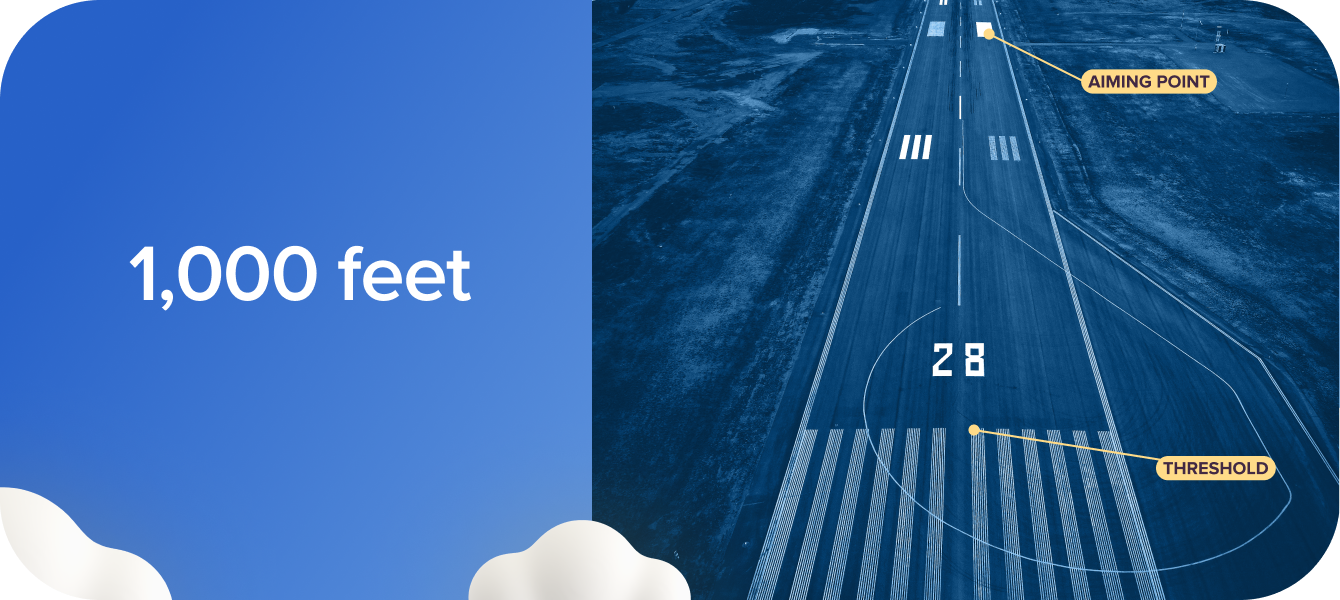
3. Centreline
The runway centreline is a dashed white line running the full length of the runway. It serves as a visual guide, helping pilots align the aircraft properly during both takeoff and landing.
The consistent spacing and uniform width of the centreline ensure optimal visibility from the cockpit, even under challenging conditions such as fog or heavy rain.
Prepare for take-off! Explore The 10 Extreme Airport Landings Worldwide on our blog – landings that will leave you on the edge of your seat.
4. Edge Markings
Runway edge markings are continuous white lines running along both sides of the runway, defining its usable width. These markings ensure pilots can identify the runway boundaries, especially during night operations or low-visibility conditions.
In some cases, additional edge lighting is used to enhance visibility, particularly at night or during adverse weather.
5. Landing Designator
The landing designator consists of large white numerals located at the beginning of each runway, indicating the magnetic heading of the runway. These numbers help the pilot to identify the correct runway during the approach and to align the aircraft with the runway heading.
When airports have parallel runways, additional identifiers such as L (Left), C (Centre), or R (Right) are used to distinguish them.
6. Threshold
The threshold is the marked beginning of the usable runway for landing purposes. Indicated by a row of white longitudinal stripes, it highlights the designated landing area, ensuring pilots are aware of the appropriate touchdown zone. A displaced threshold — moved forward from the runway’s physical end — is often used to provide additional obstacle clearance or to protect the runway surface from wear.
Okay, so we've talked about runway structure. Now, let's get into the lightening system! We're about to explore the different types of runway lights, their colours, and how they're spaced out.
Build a solid foundation for your AGK studies with our blog From Nose to Tail: Aircraft Parts and Their Functions. We break down aircraft components.
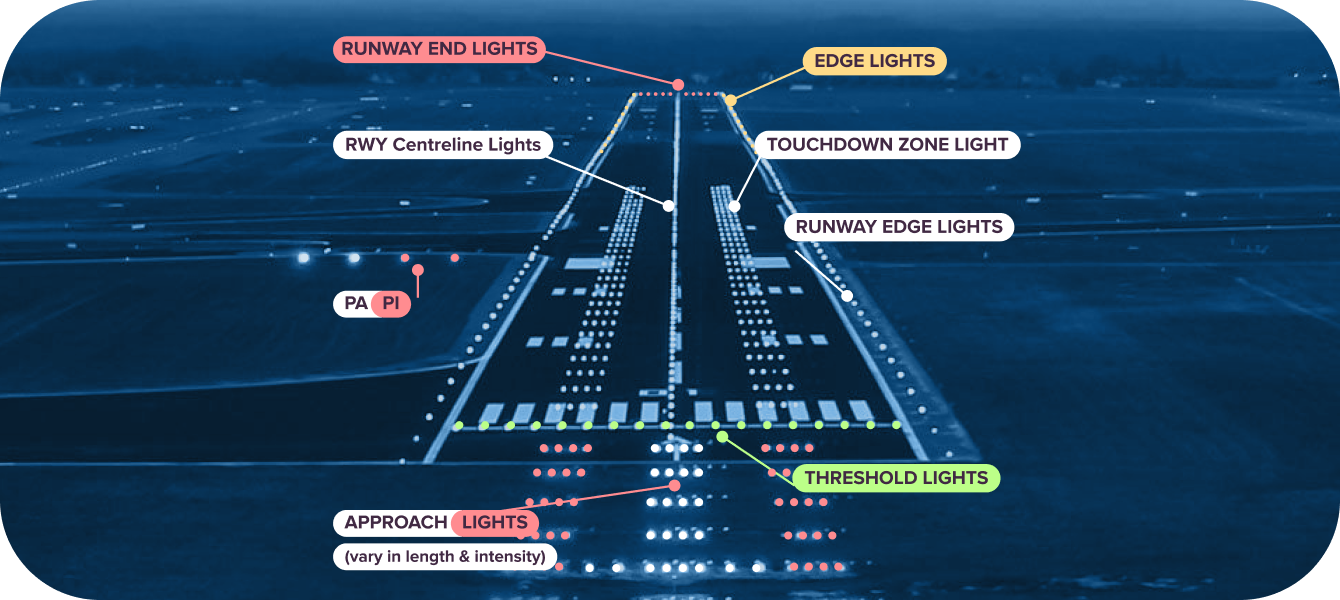
Approach Lights
Approach lights are the first visual cues pilots encounter during landing, extending into the runway's approach area. These lights are critical for guiding aircraft to the touchdown zone, especially in low visibility.
Precision Runways: The approach lighting system extends 2,400 – 3,000 feet into the approach area.
Non-Precision Runways: The system typically covers 1,400–1,500 feet.
Runway Threshold Lights
Threshold lights span the beginning of a runway’s landing threshold, providing a clear visual cue for pilots to initiate their descent.
Green: Identifies the runway threshold for landing.
Red: Indicates the end of the runway when viewed from the opposite direction.
Nailing your checkride? Airhead got you covered! This blog highlights 11 key areas to help you prepare confidently and ace your exam.
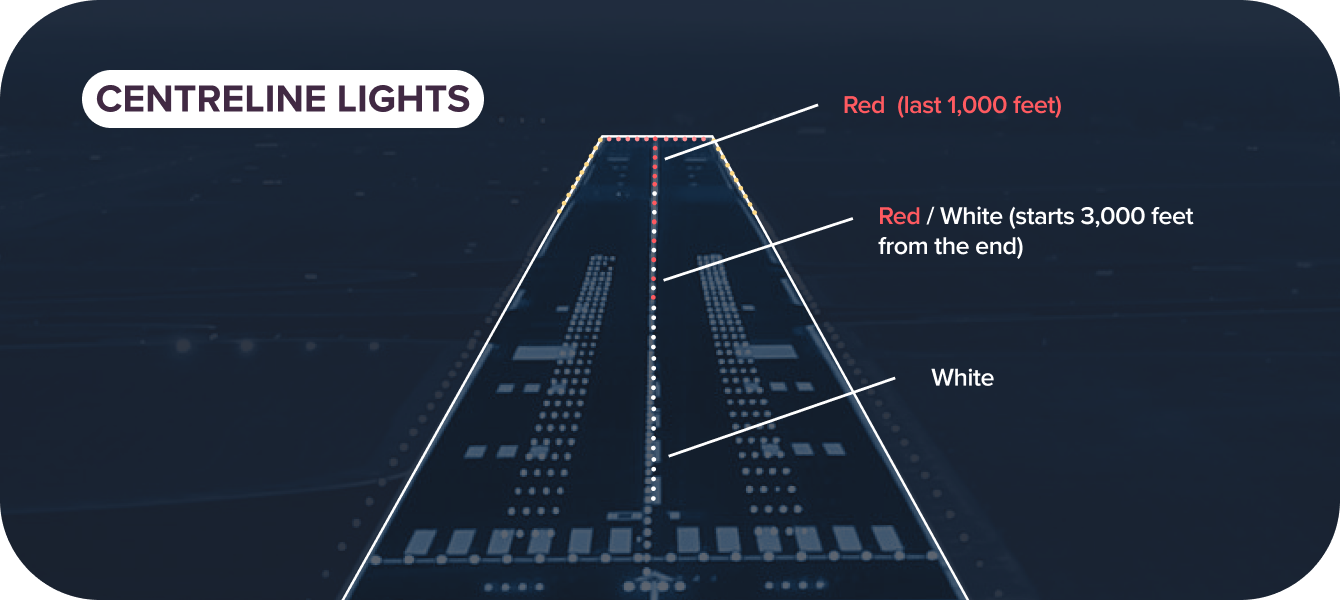
Runway Centreline Lights
Runway centreline lights provide precise guidance along the middle of the runway and are essential for safe navigation during take-off and landing in low visibility. Spaced at 50-foot intervals along the runway’s length.
White: Visible from the runway threshold to 3,000 feet before the end.
Alternating White and Red: Indicate the final 2,000 feet, warning pilots of the approaching runway end.
Red: Mark the last 1,000 feet of the runway, signalling pilots that the runway is ending.
Mandatory for all CAT II and CAT III runways and used on some CAT I runways, depending on operational needs.
Runway End Lights
Runway End Identifier Lights (REILs) provide rapid and unambiguous identification of the runway's approach end. It is a synchronised pair of flashing lights on either side of the runway threshold. Available in omnidirectional (visible from all directions) or unidirectional (visible only from the approach area) configurations.
For safer landings, especially in low-visibility conditions, Runway End Identifier Lights (REILs) enhance runway identification, particularly in areas with high ambient light or low terrain contrast.
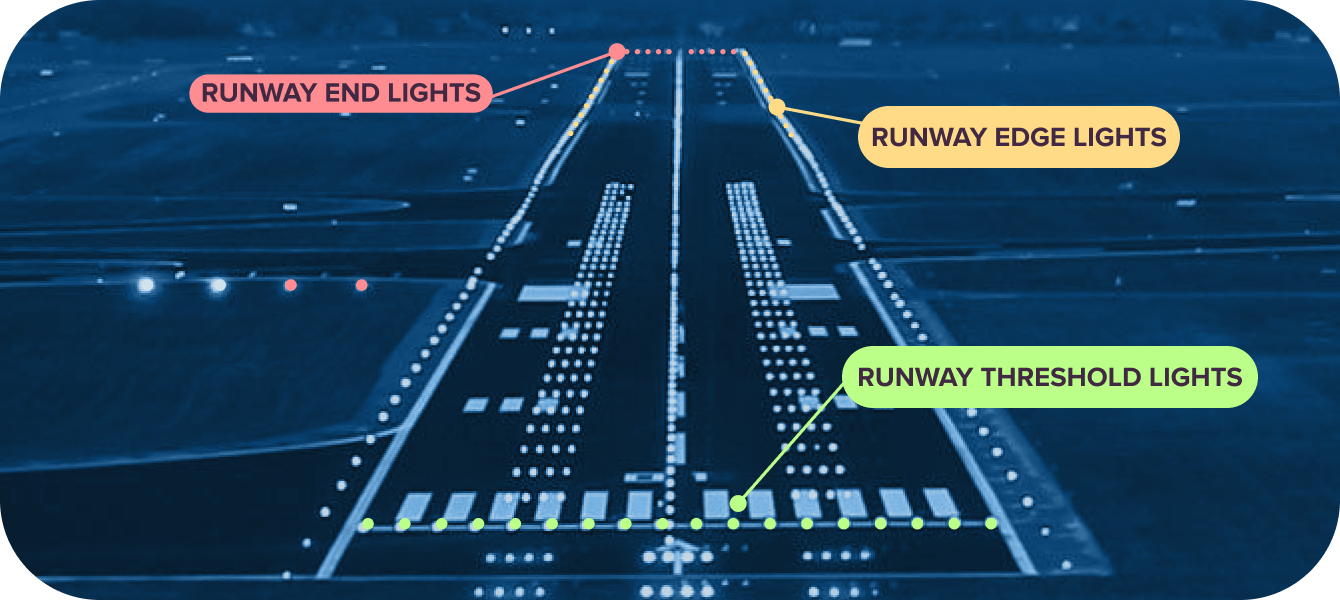
Runway Edge Lights
Runway edge lights mark the boundaries of the runway, guiding pilots during approach and landing. They are typically spaced at 200-foot intervals, with some exceptions near intersections where spacing can extend to 400 feet. Positioned 2-10 feet beyond the usable runway edge, these lights can vary in intensity.
White: Used along the majority of the runway.
Yellow: Replaces white for the last 2,000 feet or half the runway length (whichever is shorter), forming a caution zone for reduced runway distance.
Red Lights: Mark the runway’s endpoint, visible to pilots from either direction.
Touchdown Zone Lights
Touchdown Zone Lights (TDZLs) enhance the visibility of the touchdown zone on precision approach runways, guiding pilots to land within the optimal area.
Two rows of steady white transverse light bars are symmetrically placed on either side of the runway centreline. Start 100 feet (ca. 30 m) beyond the runway threshold and extend for 3,000 feet (900 metres) or to the runway midpoint, whichever is shorter.
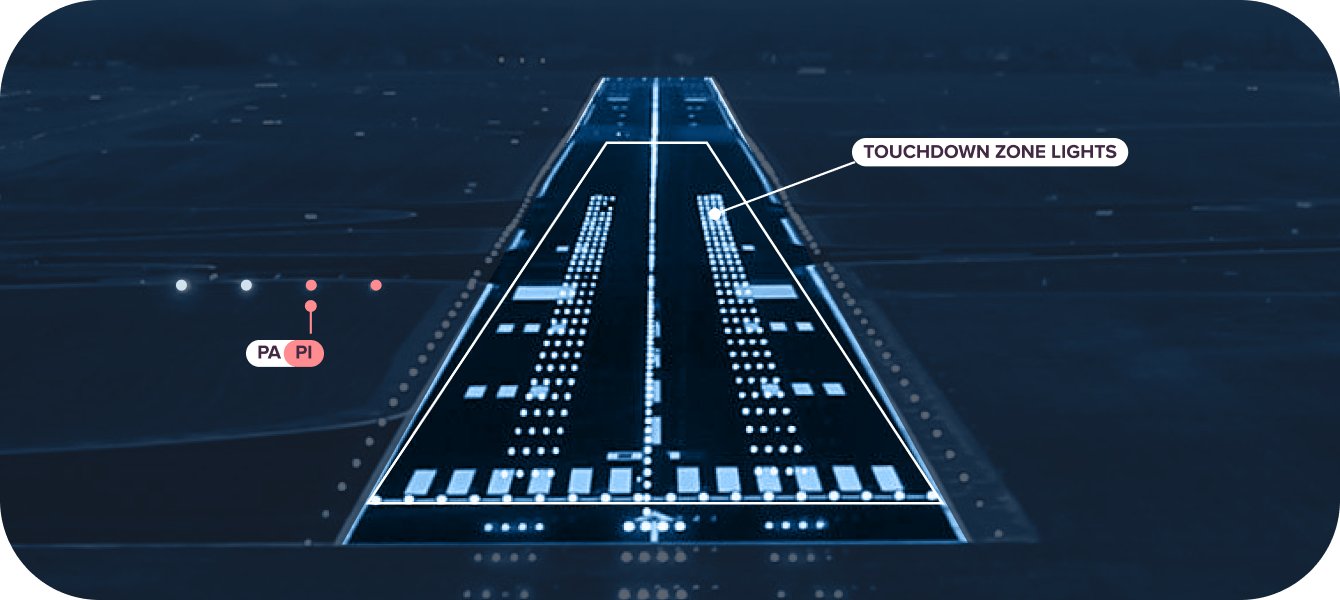
PAPI and VASI Lighting Systems
The Precision Approach Path Indicator (PAPI) and Visual Approach Slope Indicator (VASI) systems assist pilots in maintaining the correct glide path during the approach.
PAPI: A row of four lights, perpendicular to the runway. Combinations of red and white lights indicate whether the aircraft is on, above, or below the glide slope.
VASI: Two rows of lights (near and far) are placed perpendicular to the runway. Provides similar information as PAPI but with a different configuration.
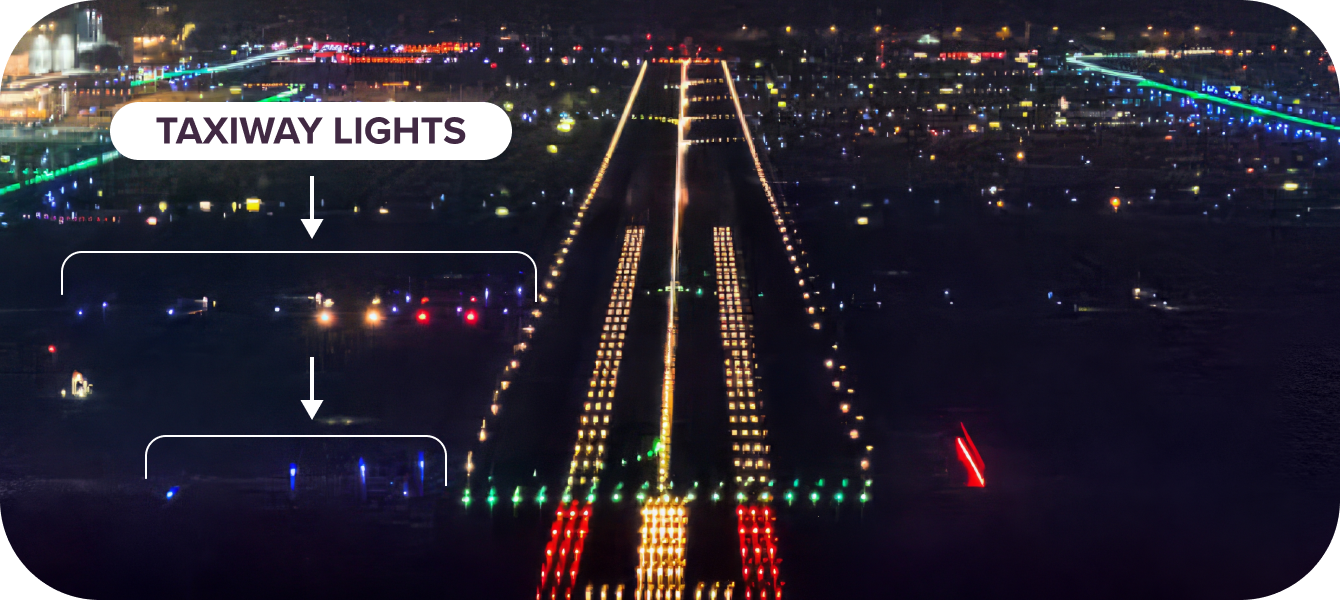
Taxiway Lights
Taxiway edge lights are always blue, clearly distinguishing them from the white centreline lights of runways. This colour differentiation enhances safety during ground operations. Some major airports use green centreline lights on taxiways, aiding pilots in maintaining alignment, especially on curved sections.
Blue Edge Lights: Mark the taxiway boundaries.
Green Centreline Lights: Indicate the taxiway centreline, helping pilots stay aligned during ground manoeuvres.
Lead-On/Lead-Off Lights: Alternating green and yellow lights provide guidance for entering or exiting the runway.
Yellow Centreline Lights: Appear when approaching a runway from a taxiway, warning pilots they are entering the runway environment.
Explore 11 stunning airports celebrated for their design and functionality. Read our blog post Where Beauty Meets Efficiency.
Runway Light Colours and Their Meanings
Runway and taxiway lighting systems use approximately nine different colour combinations, each serving a specific purpose. These lights are carefully designed to provide essential visual cues, ensuring safe navigation during take-off, landing, and taxiing. The table below serves as a concise summary of the various runway light colours and their meanings. It complements the detailed explanations provided earlier, offering a quick reference to understand the significance of each light on the runway and taxiway.
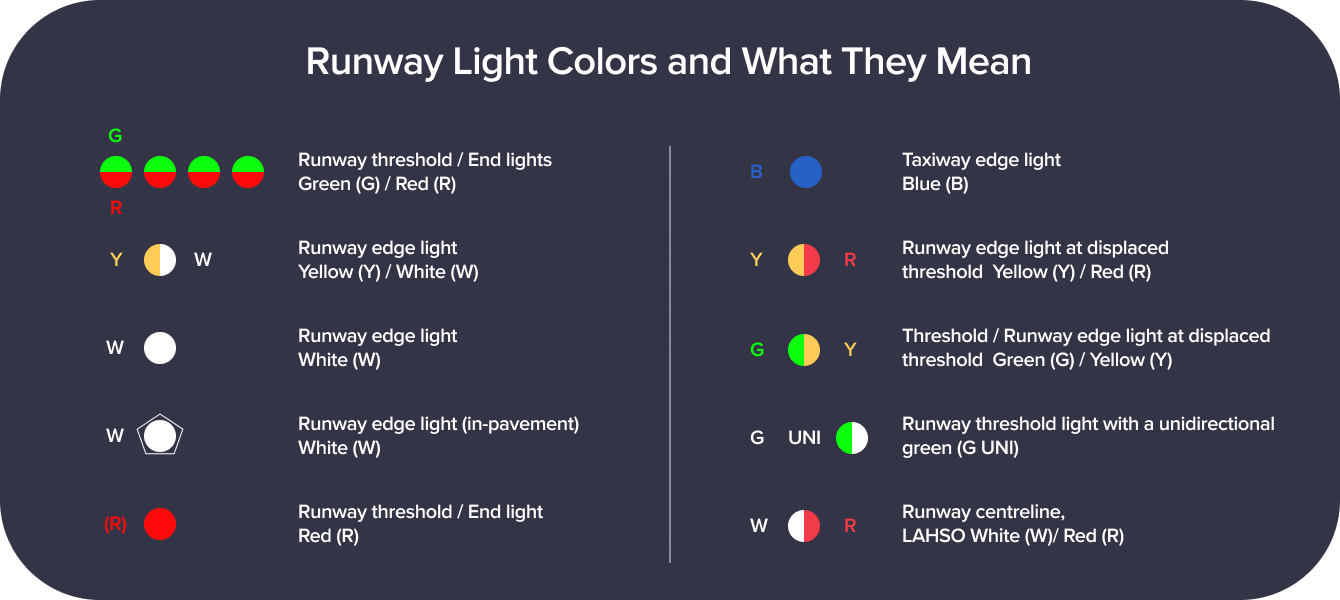
White Lights. Exclusively used for runway lighting.
White lights are the primary lights along the runway edges and centreline, ensuring pilots can easily identify the runway during all operating conditions. By limiting white lights to runways, confusion with other paved surfaces, such as taxiways, is avoided.
Red Lights. Indicate the end of the runway.
Red centreline lights appear towards the end of the runway, warning pilots they are nearing its limit. Additionally, a horizontal line of red lights marks the runway’s physical end. These lights provide critical visual cues, helping pilots safely decelerate or abort takeoff when necessary.
Blue Lights. Identify taxiway edges.
Blue edge lights outline the boundaries of taxiways, helping pilots differentiate taxiways from runways. They offer clarity during night operations or in low visibility conditions, ensuring pilots can navigate the taxiways with confidence.
Green Lights. Used on both runways and taxiways.
On runways, green lights indicate the runway threshold, marking the beginning of the usable runway for landing. On taxiways, green centreline lights guide pilots along the taxiway path. Green lights ensure proper alignment and safe transitions between runways and taxiways.
Yellow (Amber) Lights. Act as cautionary signals.
On runways, yellow edge lights warn pilots when less than 2,000 feet, or less than half the runway length (whichever is shorter), remains. On taxiways, yellow centreline lights alert pilots that they are nearing a runway intersection or holding a short line. These lights enhance situational awareness, ensuring pilots are prepared to adjust their actions accordingly.
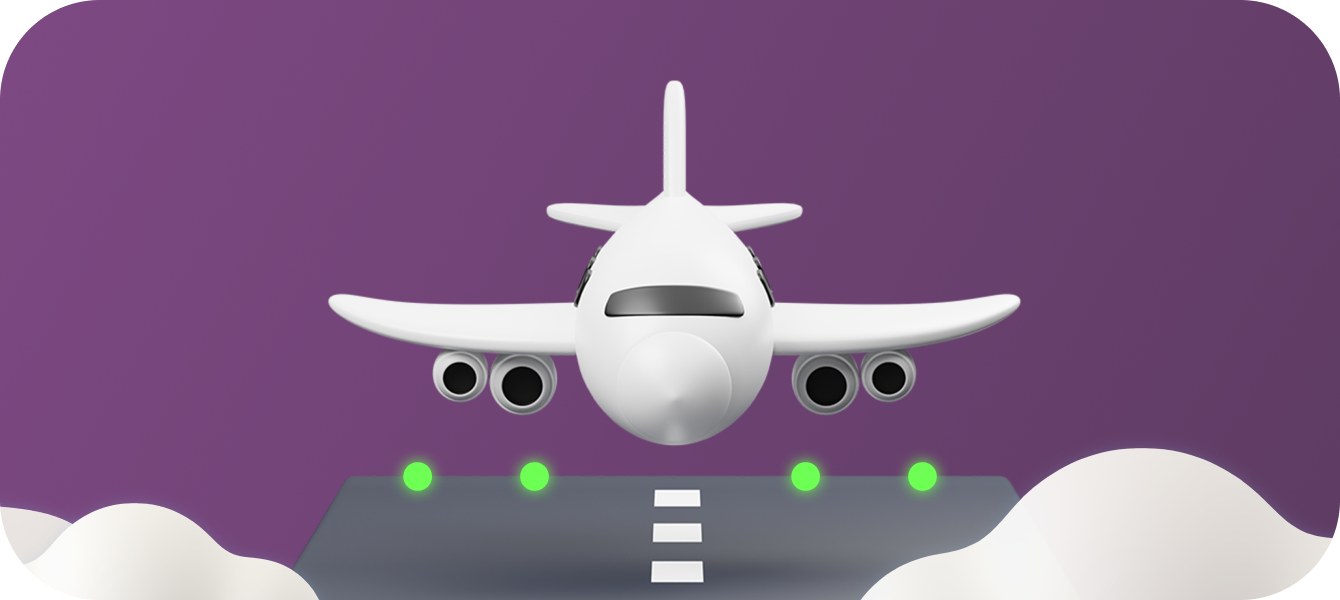
Airhead's Takeaways
Runway lights offer visual guidance to pilots in low light or low visibility conditions. These lights typically indicate the runway edge, threshold, centreline, and touchdown zone.
Some runways have approach lights and descent guidance that direct pilots during landing.
Runway lights are almost direct replacements for runway markings that are only visible in the day.
Runway light colours have specific meanings.


